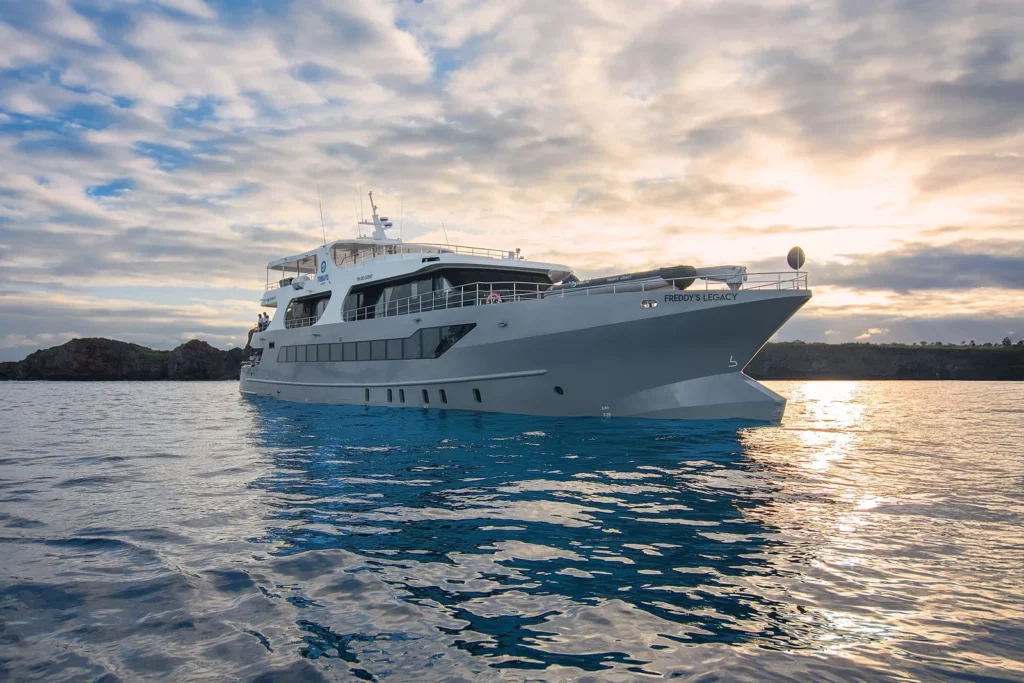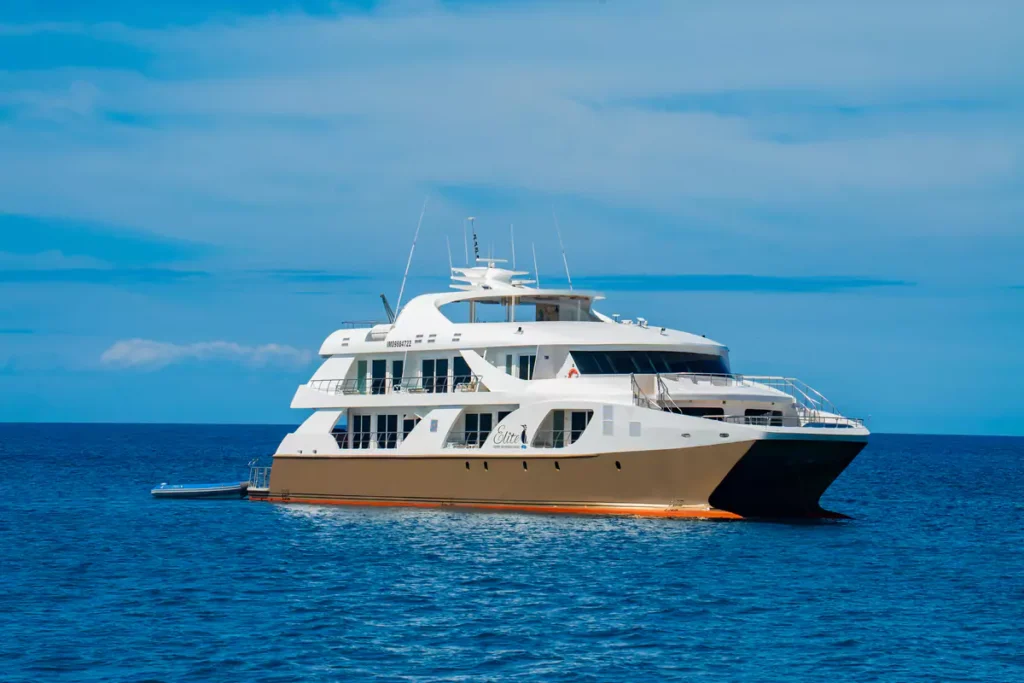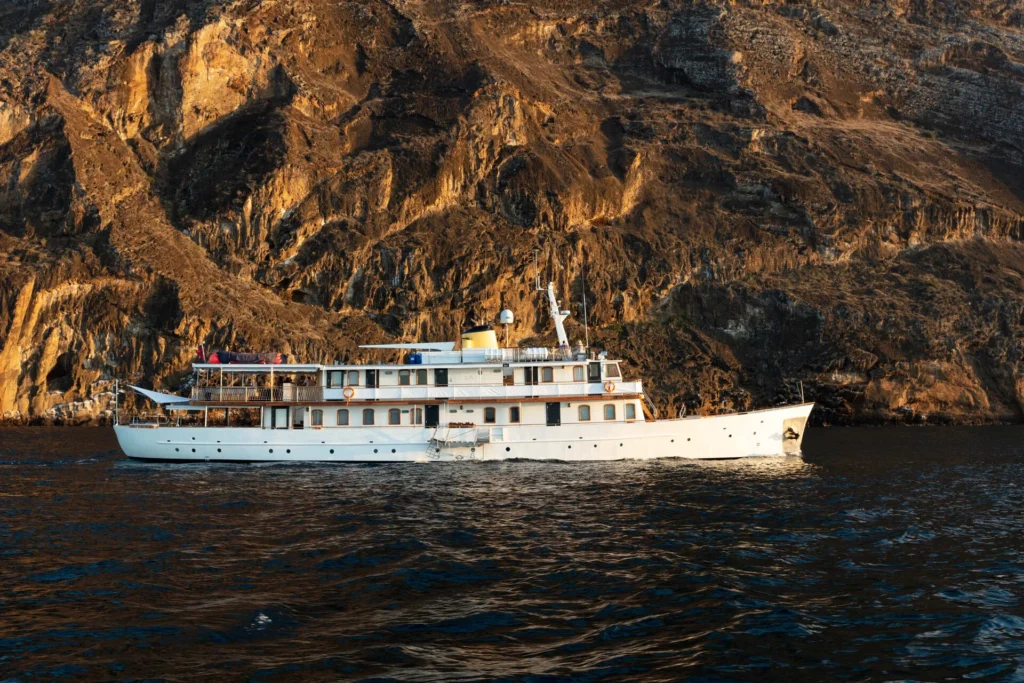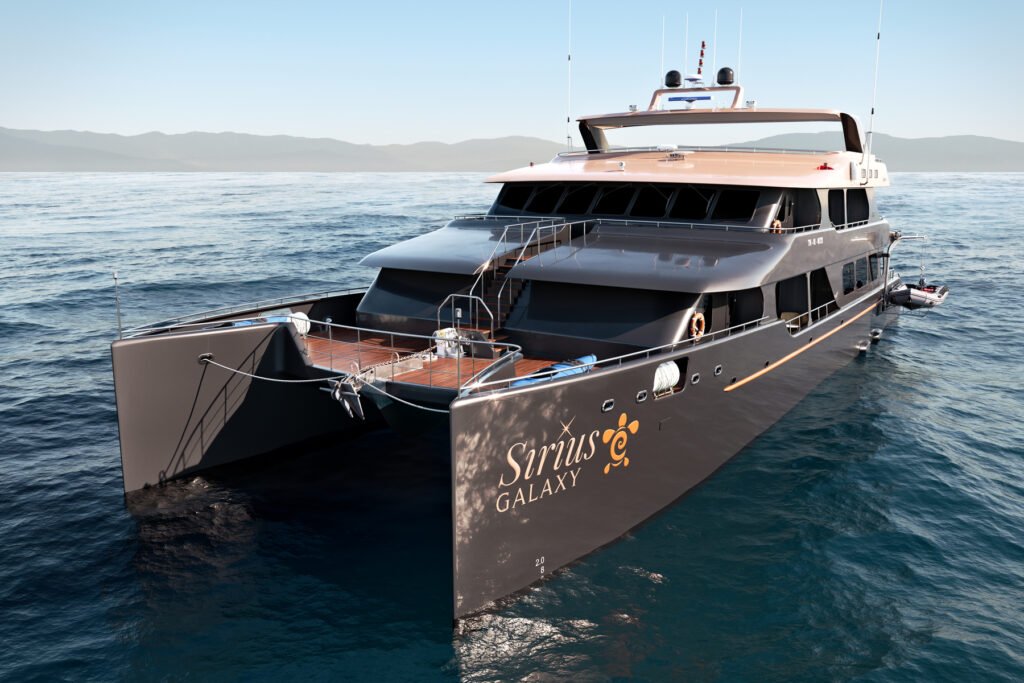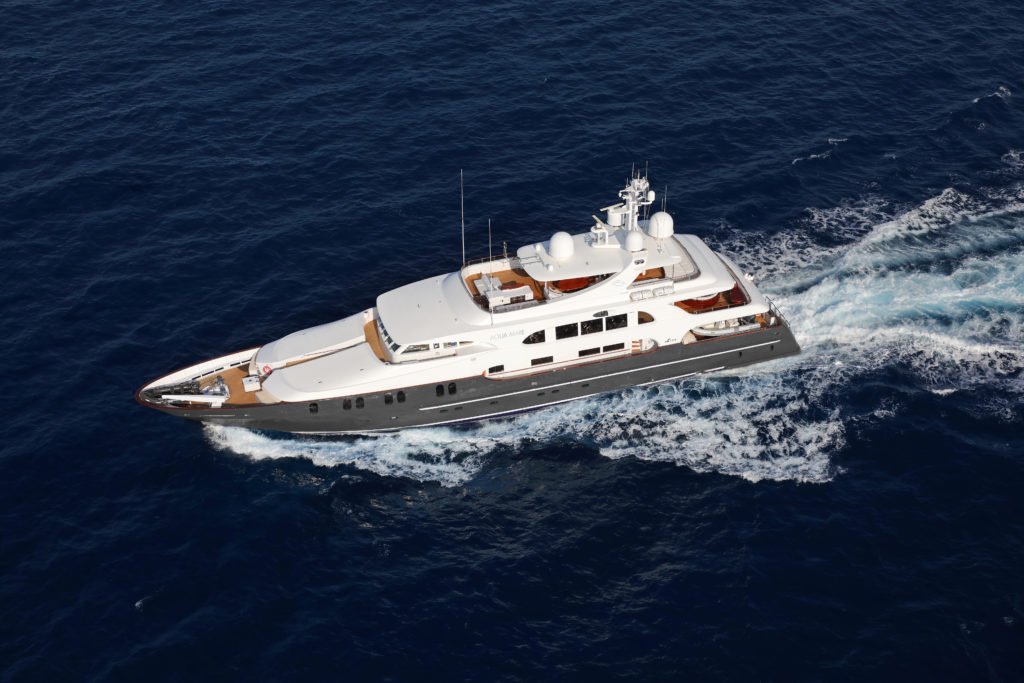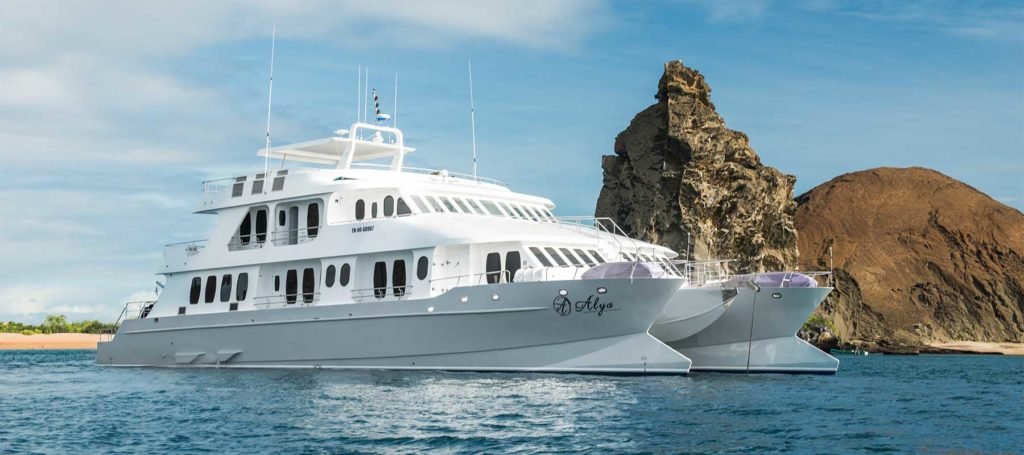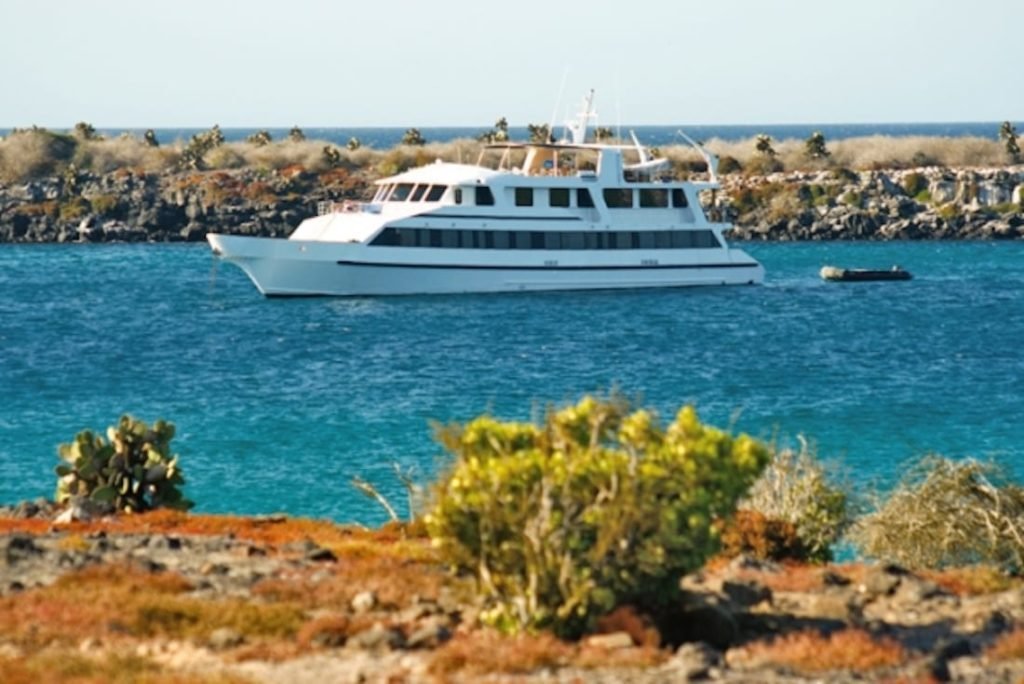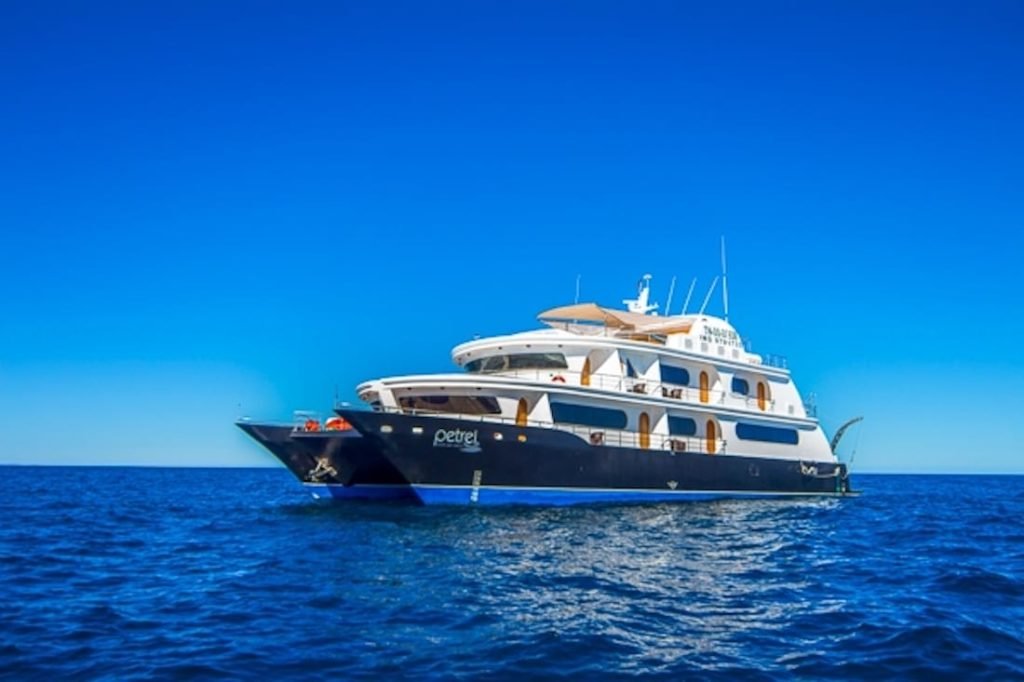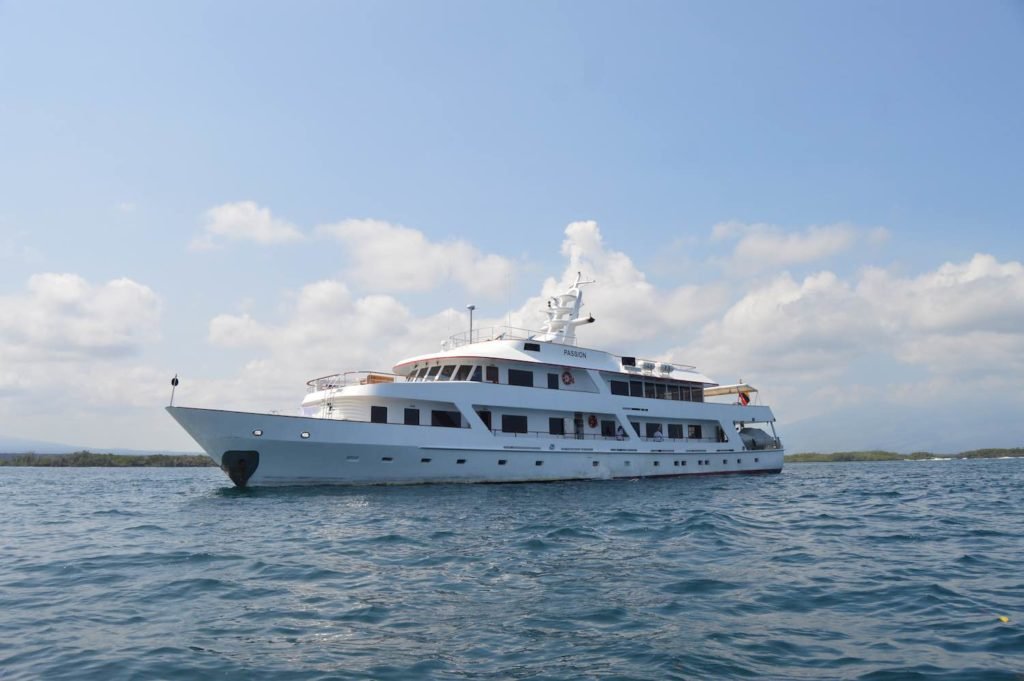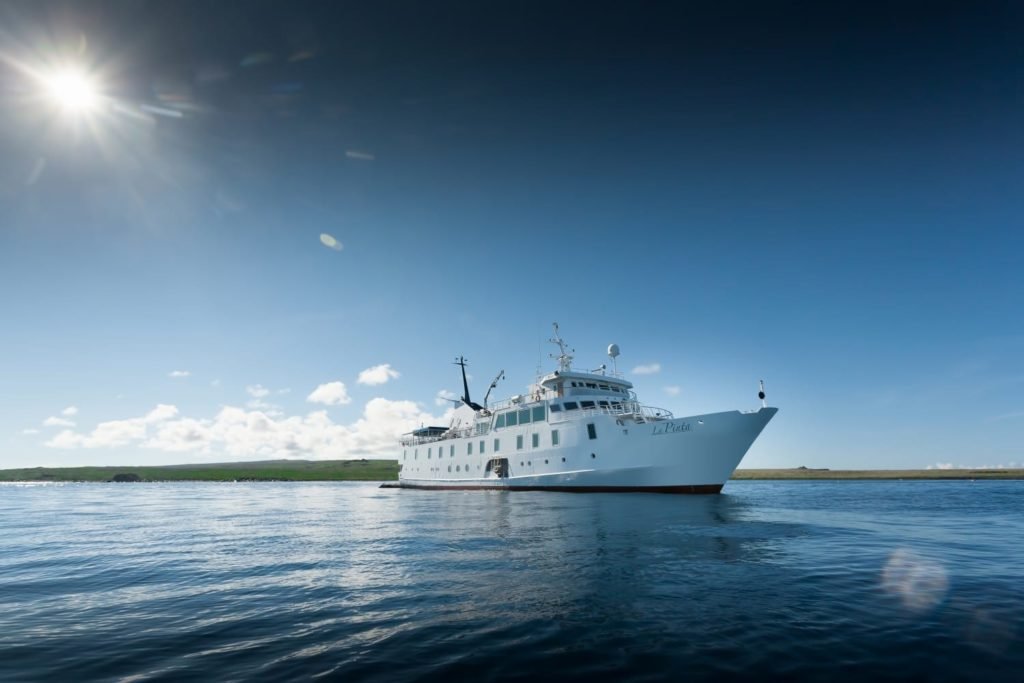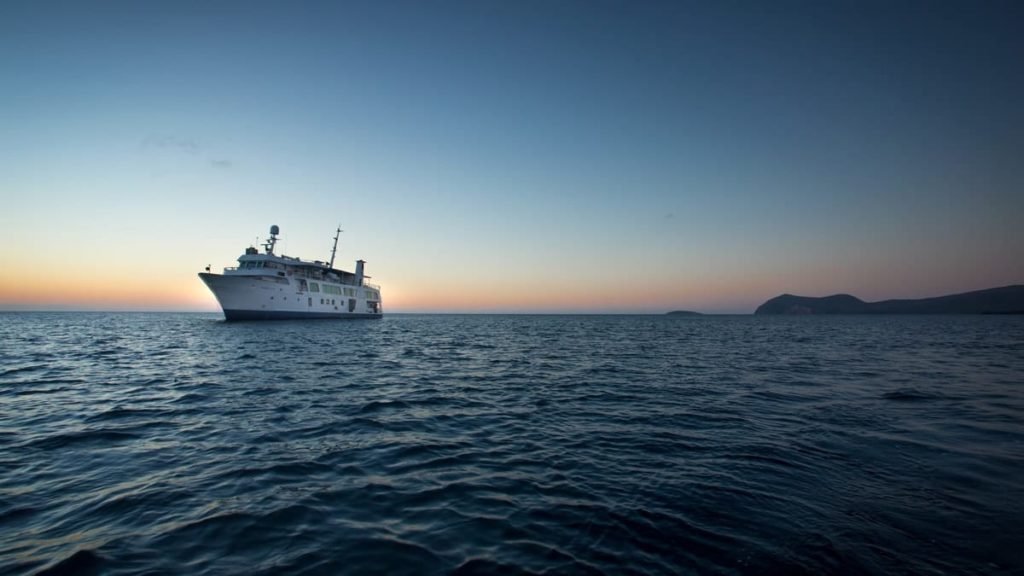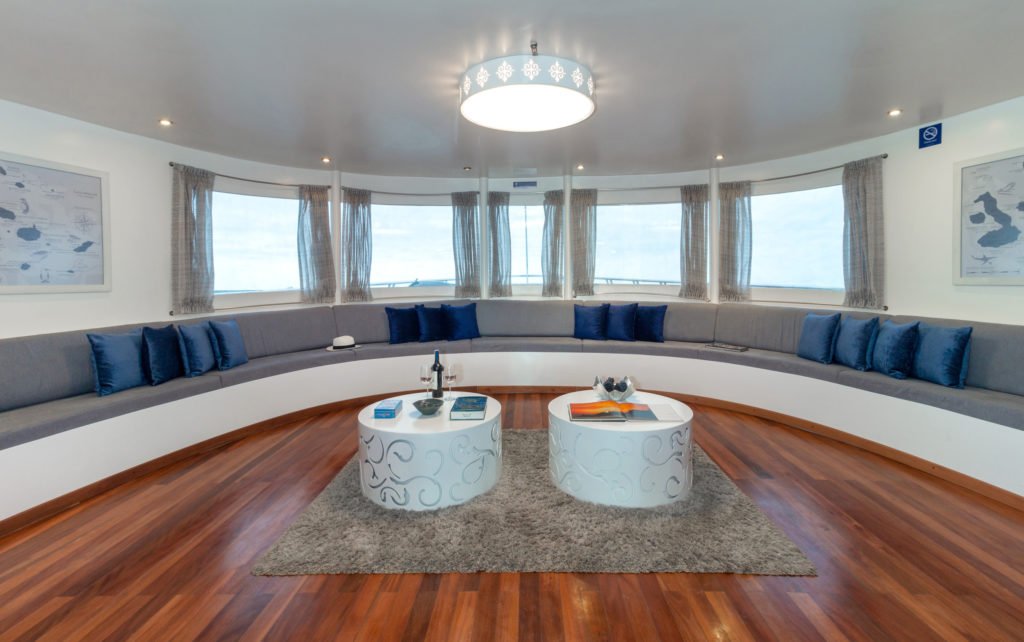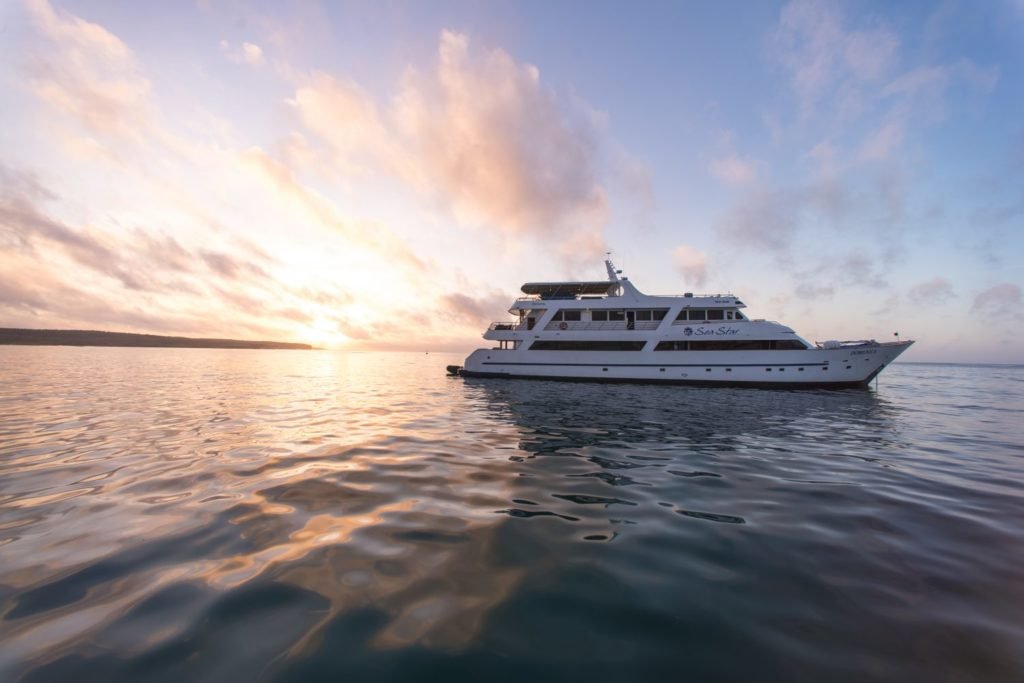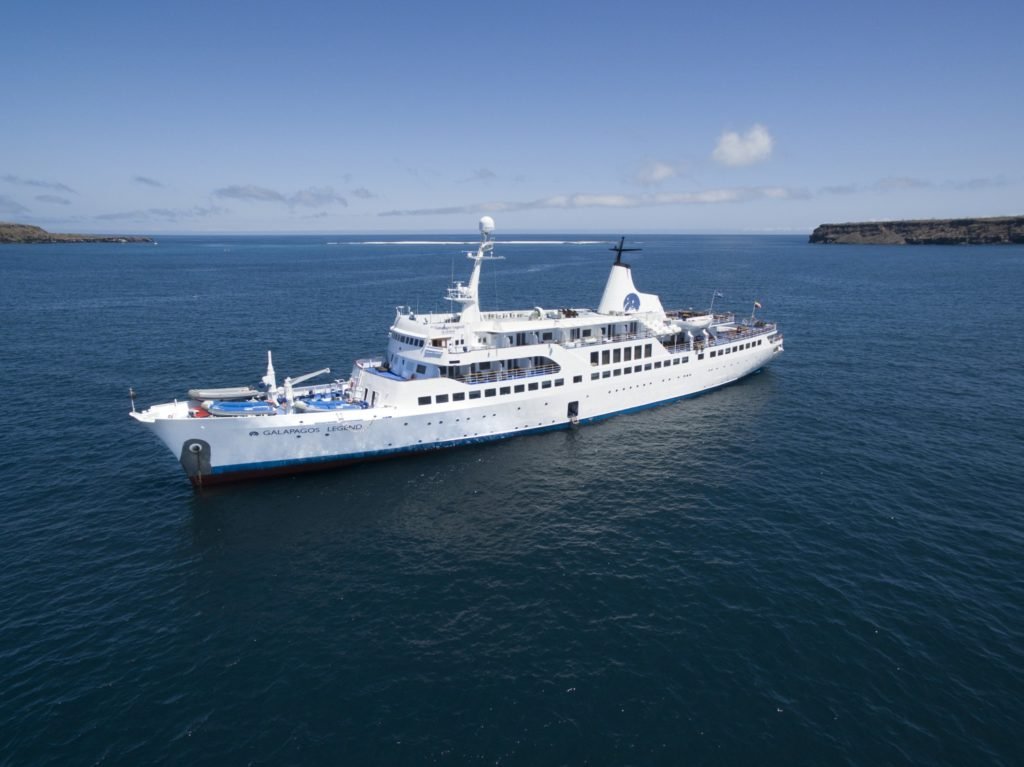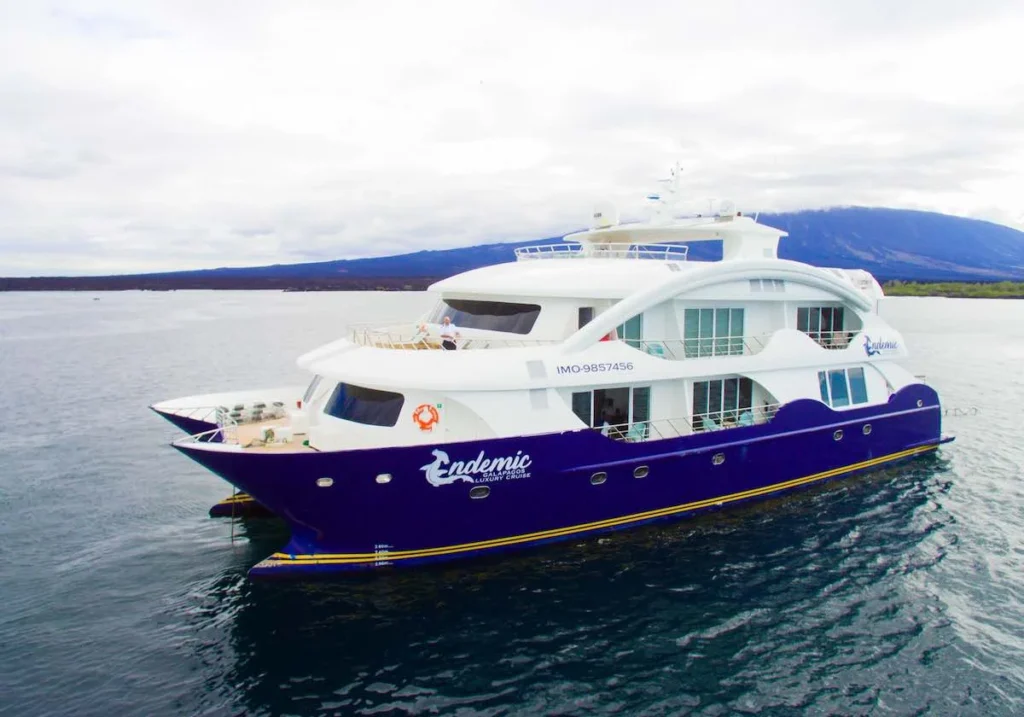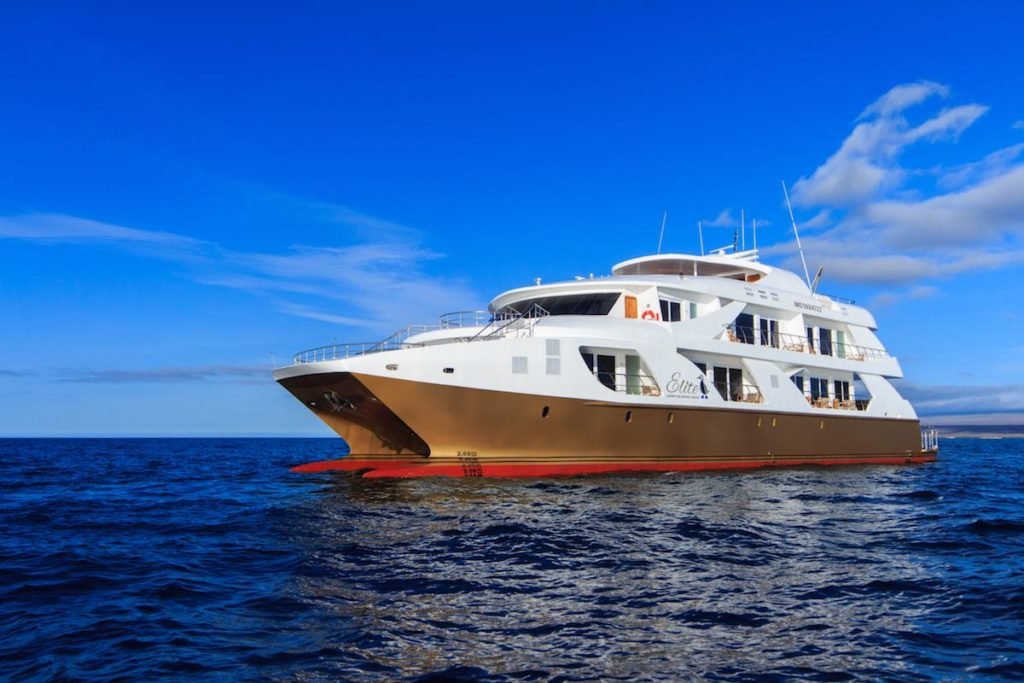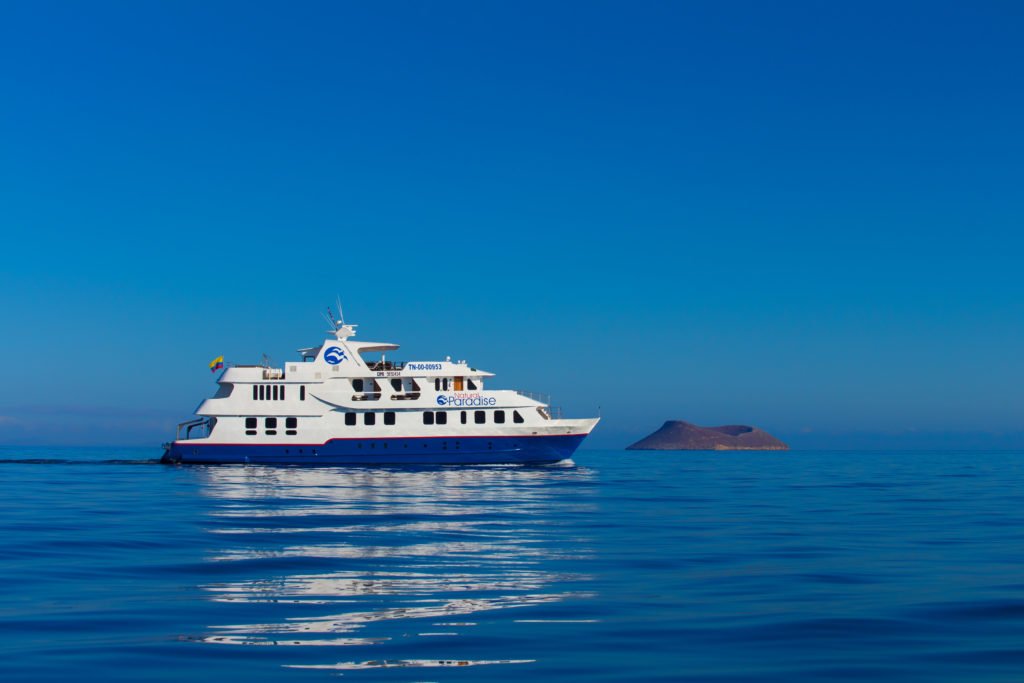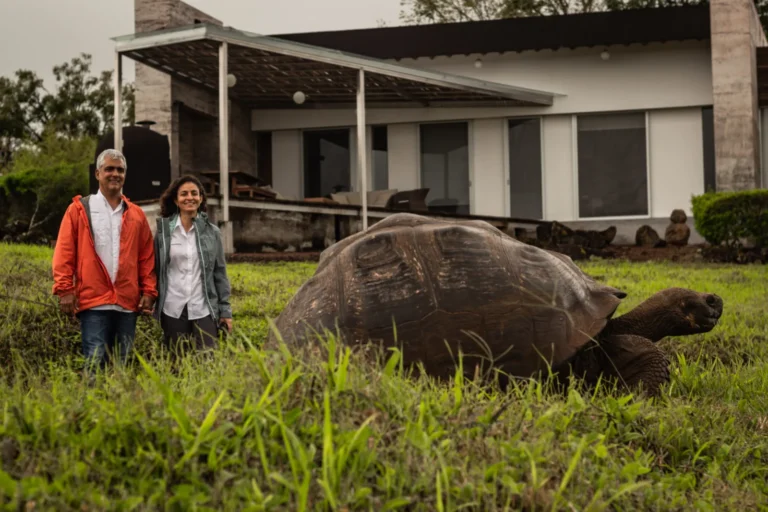Galapagos Yacht Charters and Catamarans
Are you looking for a private Galapagos yacht charter?
Galapagos luxury charters of motor yachts, catamarans, tri-marans, and masted sailing ships can all be arranged for private multi-day cruises in the Galapagos Islands.
Most Galapagos cruises span 7-nights, although we can arrange 3-night, 4-night, and 5-night options. Although the archipelago has only about 80 luxury Galapagos cruise vessels for passengers, the fleet has a lot of variety.
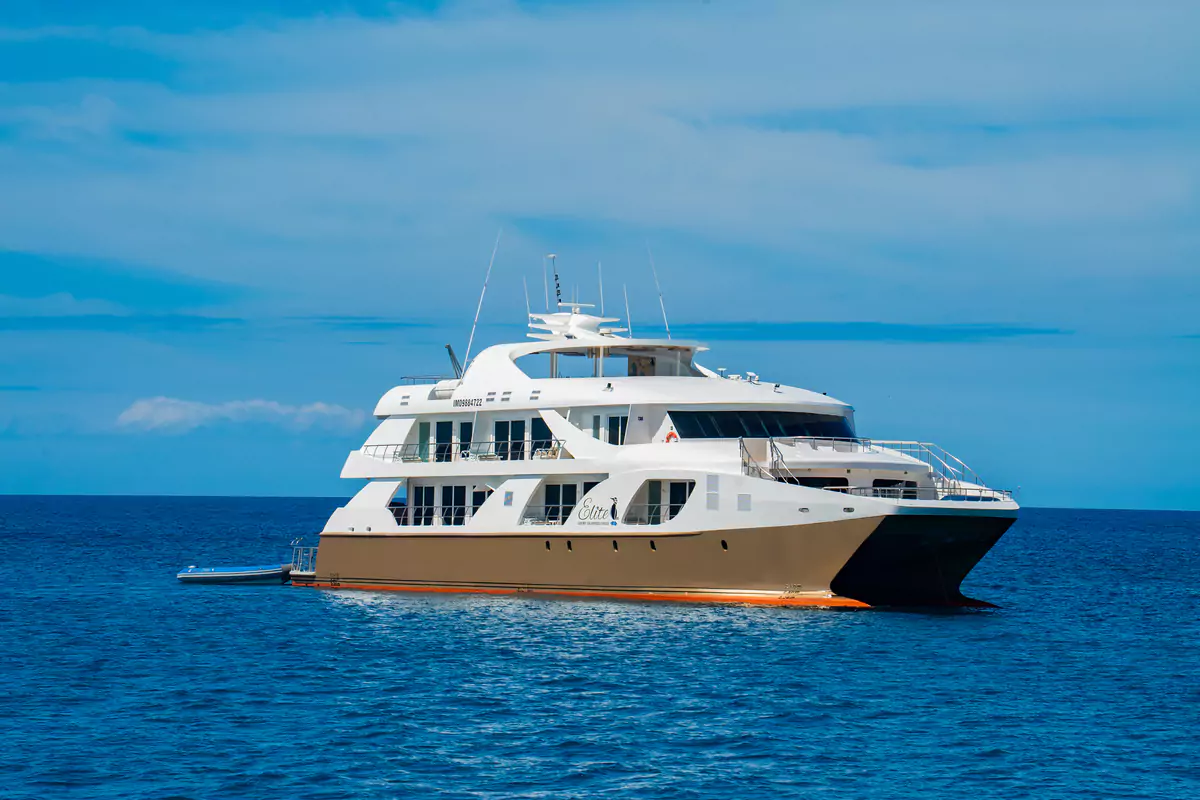
Galapagos luxury yacht charter options range from classic sailboats (with four guest cabins), to large luxury motor-yachts (with cabins for 16 or 32 passengers), and even small ships (with a maximum capacity of 100 guests).
We have direct relationships with approximately 30 of the best Galapagos luxury cruise ships, yachts, and multi-hulled cruisers.
The three pillars of a Galapagos cruise experience are: the vessel, the guides, and the itinerary. Each choice matters.
With this in mind, LANDED created this free Galapagos yacht charter guide to help you navigate your options for cruising the Galapagos Islands.
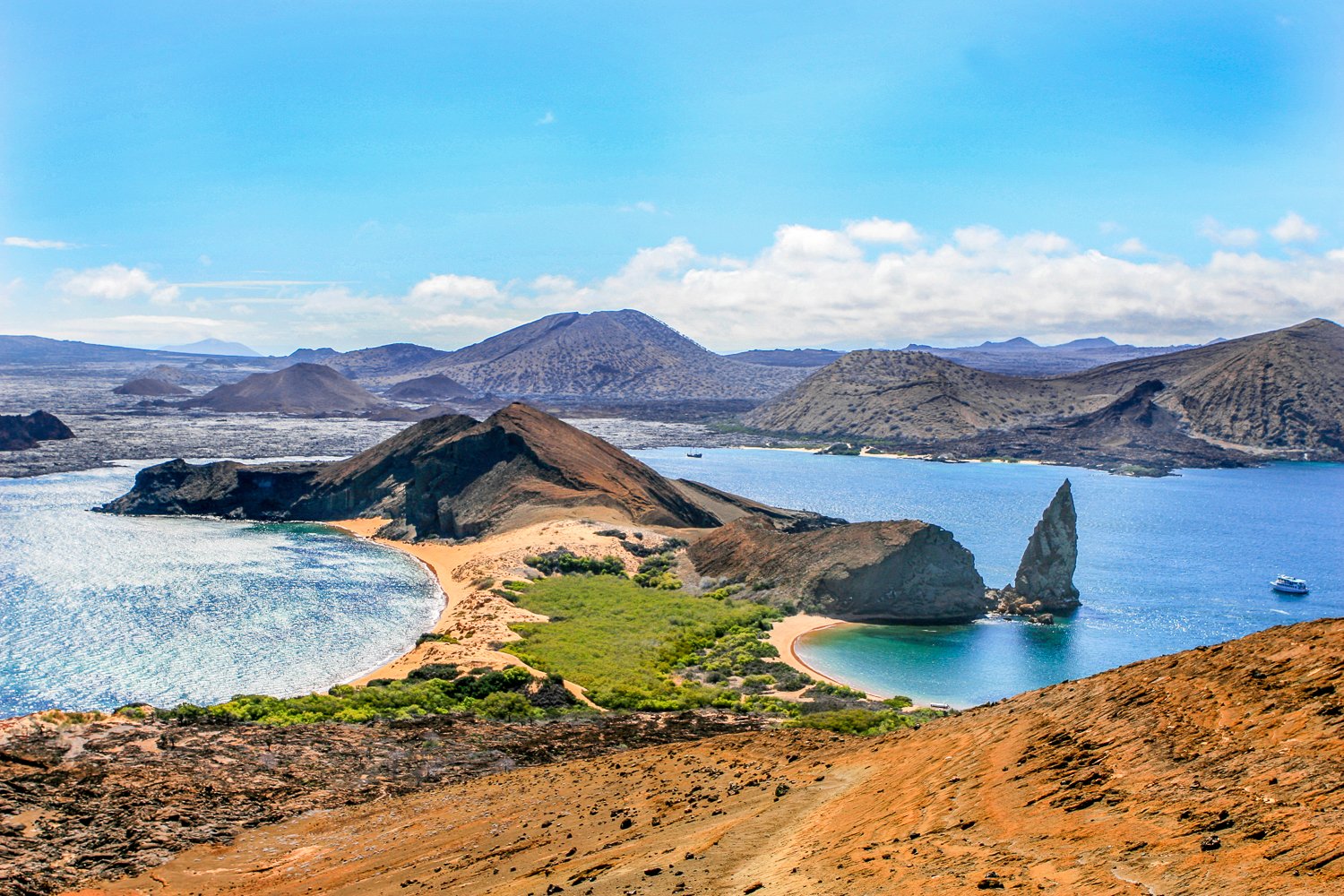
Introduction to the Galapagos Archipelago
The Galapagos Islands, also known as the “Enchanted Isles” or Islas Galapagos, offer some of the world’s best wildlife viewing. The wildlife here interact with humans in a unique manner–a combination of curiosity and playfulness. UNESCO declared the Galapagos Islands a World Heritage Site in 1975, and a Biosphere Reserve in 1985.
The archipelago and surrounding waters are also protected as a national park, marine reserve, and whale sanctuary.

The Vessel
Galapagos Charter Yachts
LANDED enjoys close partnerships with all of the top Galapagos luxury cruise operators in the archipelago.
Some of our favorite Galapagos yacht charter options are listed here: Best Cruises in the Galapagos.
Catamarans and Trimarans
For those looking for a different Galapagos charter experience, LANDED also arranges private cruises aboard Catamarans and Trimarans. These vessels are known for their stability and large cabin sizes.
Due to their shallow drafts, catamarans are capable of hugging the coast, avoiding wave action and allowing for even better wildlife viewing.
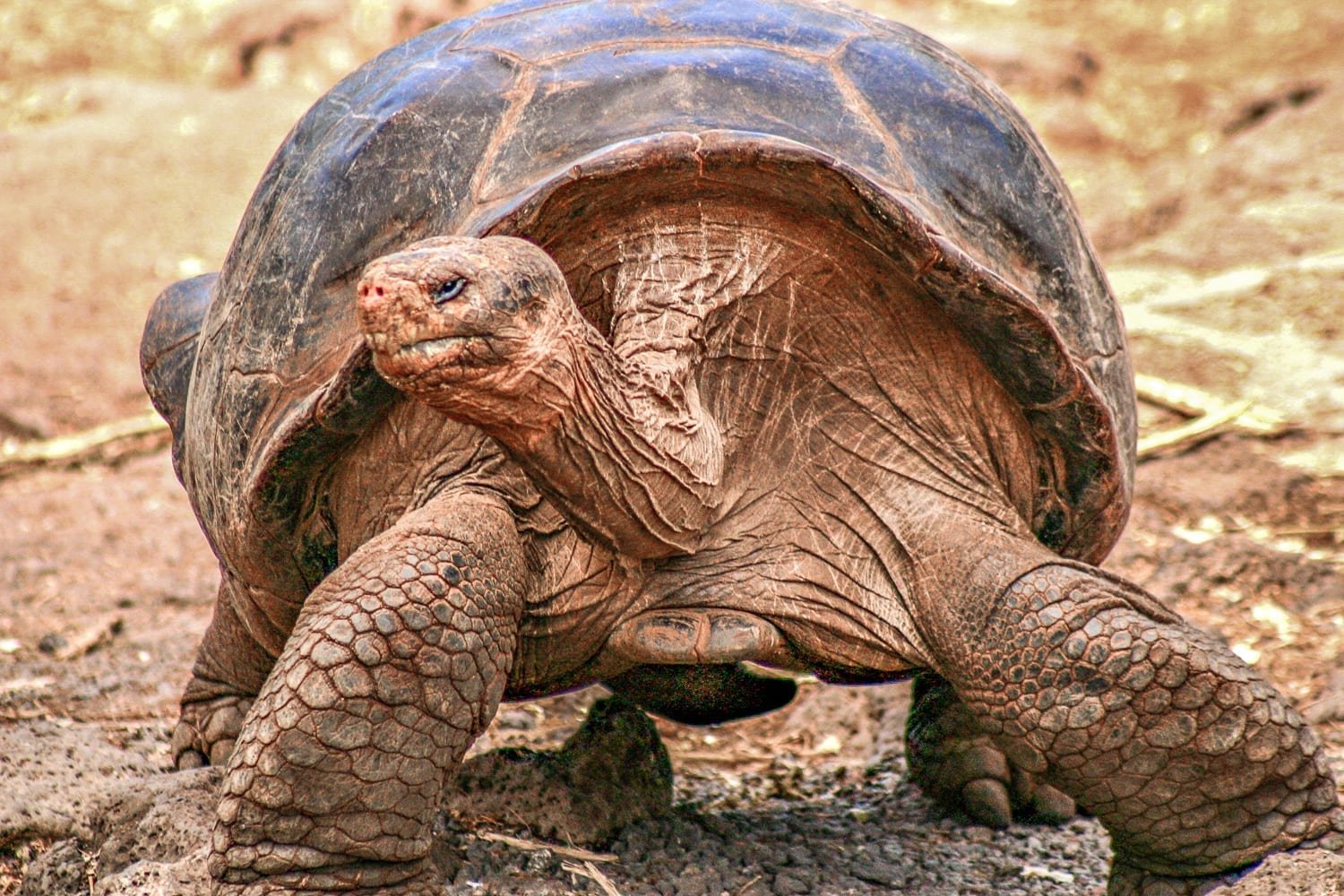
If traveling with children, you will also have to consider the vessel’s own policies and practical guidelines for younger travelers. Most luxury yachts, catamarans, and trimarans require a minimum age, often between 6 and 12 years old, depending on the vessel and itinerary.
Cabin configurations can also be a factor — many vessels have limited triple or connecting cabins, which can affect family accommodations. Additionally, not all cruises offer dedicated children’s programming, so families should be comfortable with shared excursions and group activities led by naturalist guides. Private charters will provide more flexibility and a tailored experience for families.
LANDED can help identify which vessels are best suited for families, balancing safety, comfort, and engagement for travelers of all ages.
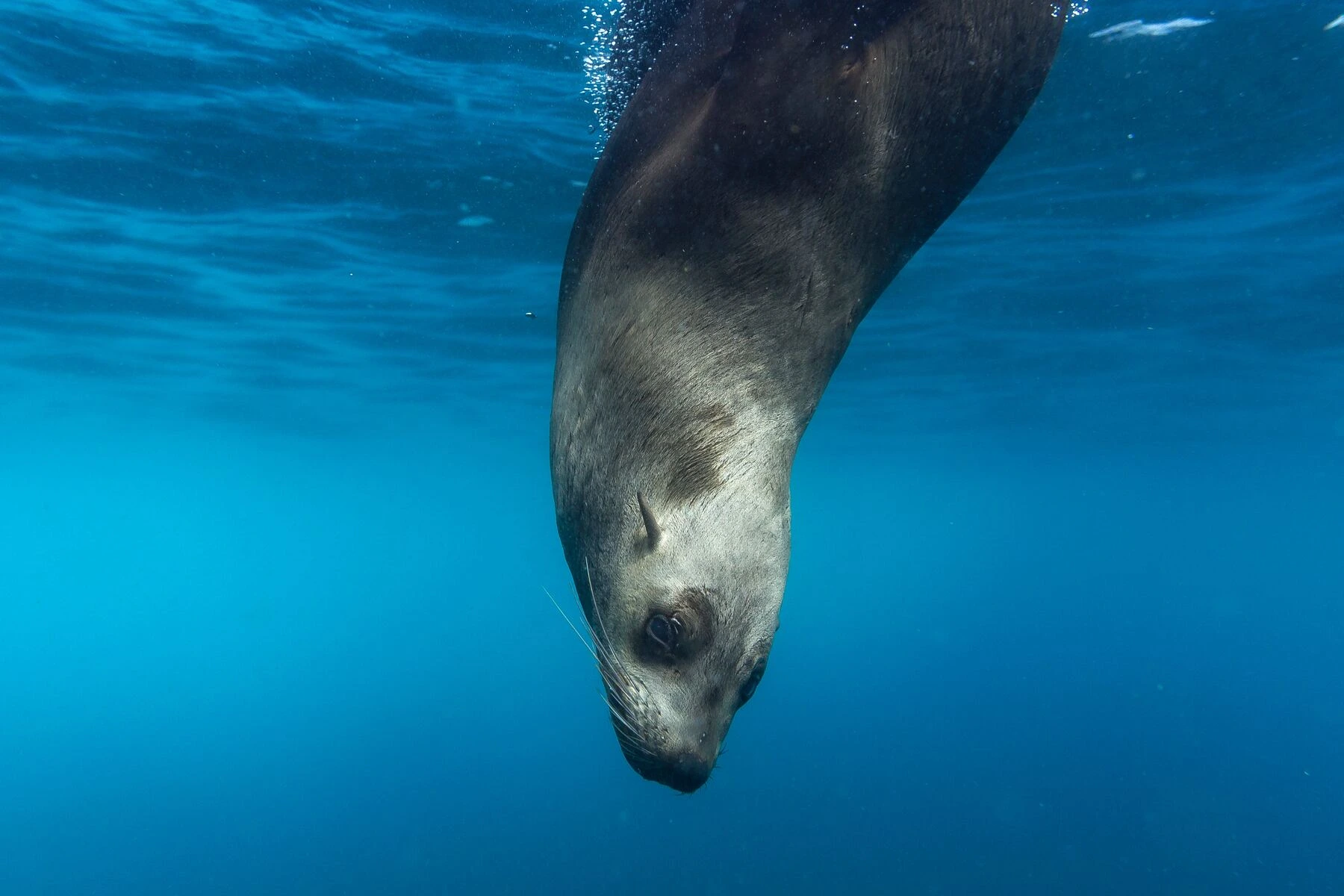
The Guides
Guides play a central role in the Galapagos experience. All excursions within the National Park are led by Galapagos residents, trained and licensed by the Galapagos National Park Authority. Group size and guide level vary by vessel, with a maximum of 16 people per guide while on land. Some of our favorite vessels have two naturalist guides on their crew, allowing for smaller groups.
Galapagos Leisure Activities
Under the supervision of licensed naturalist guides, passengers on a Galapagos luxury cruise can enjoy leisure activities including, but not limited to:
- Stand Up Paddle Boarding
- Observing Mating Rituals
- Walks Along The Beach
- Exploring Volcanoes
- Wildlife Watching
- Panga Rides
- Hiking
- Swimming with Sea Lions
- Dolphin Watching
- Whale Watching
- Birdwatching
- Sea Kayaking
- Scuba Diving
- Sunbathing
- Snorkeling
- Caving
Visitors to the Galapagos Islands can also learn about the unique adaptations of resident species.
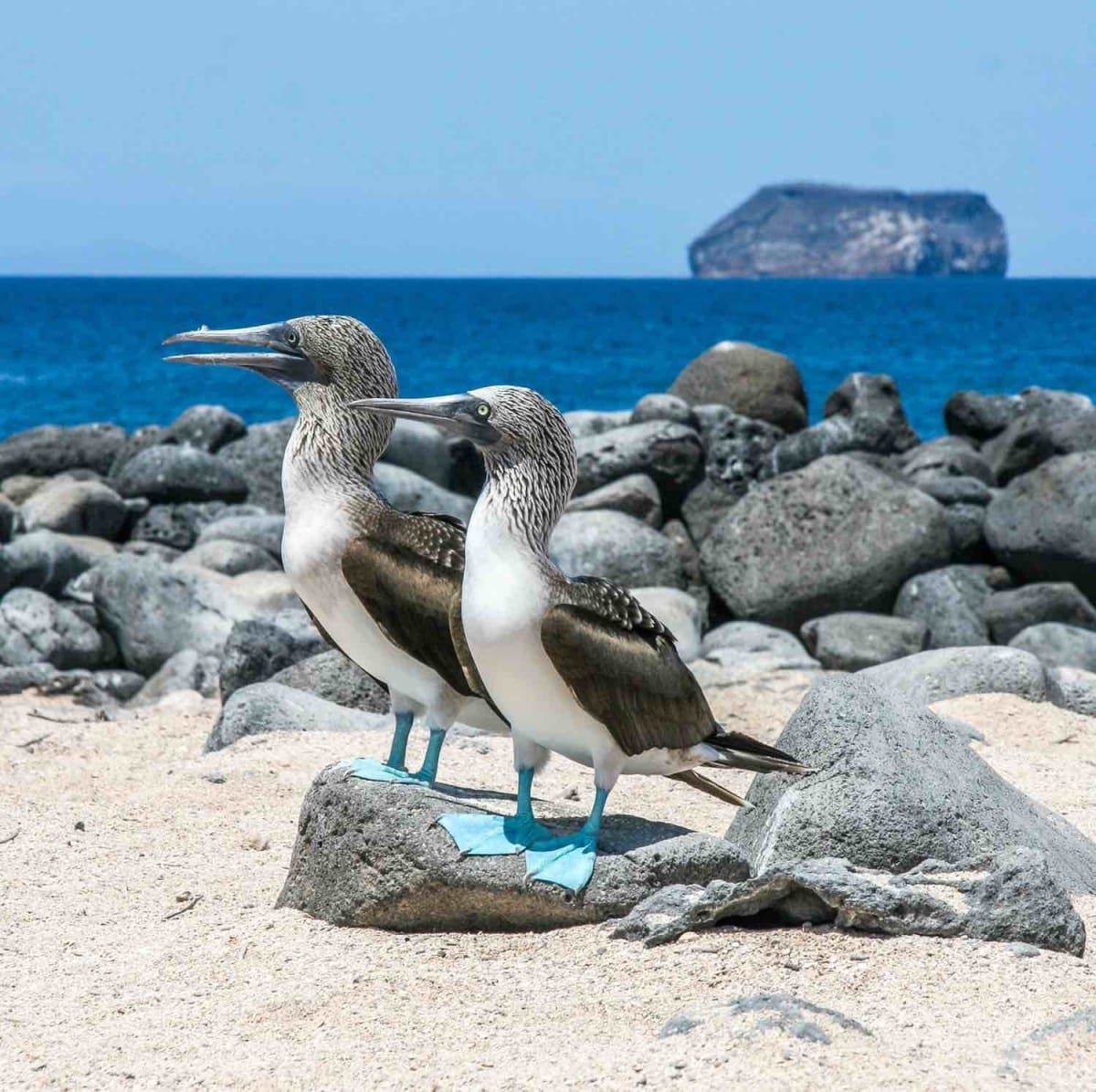
The Itinerary
Most of our clients embark on three, four, or seven-day cruises. Many of these programs visit the major island cluster, offering daily guided wildlife and geology tours. For those interested in scuba diving, longer cruises to the outlying islands are available.
Some opt for a chartered Galapagos luxury cruise to enhance their wildlife watching experience in the archipelago. Your Galapagos guide can help you seek out and spend time near the species of greatest interest to you, such as sea lions, giant tortoises, flamingos, penguins, boobies, or marine iguanas.
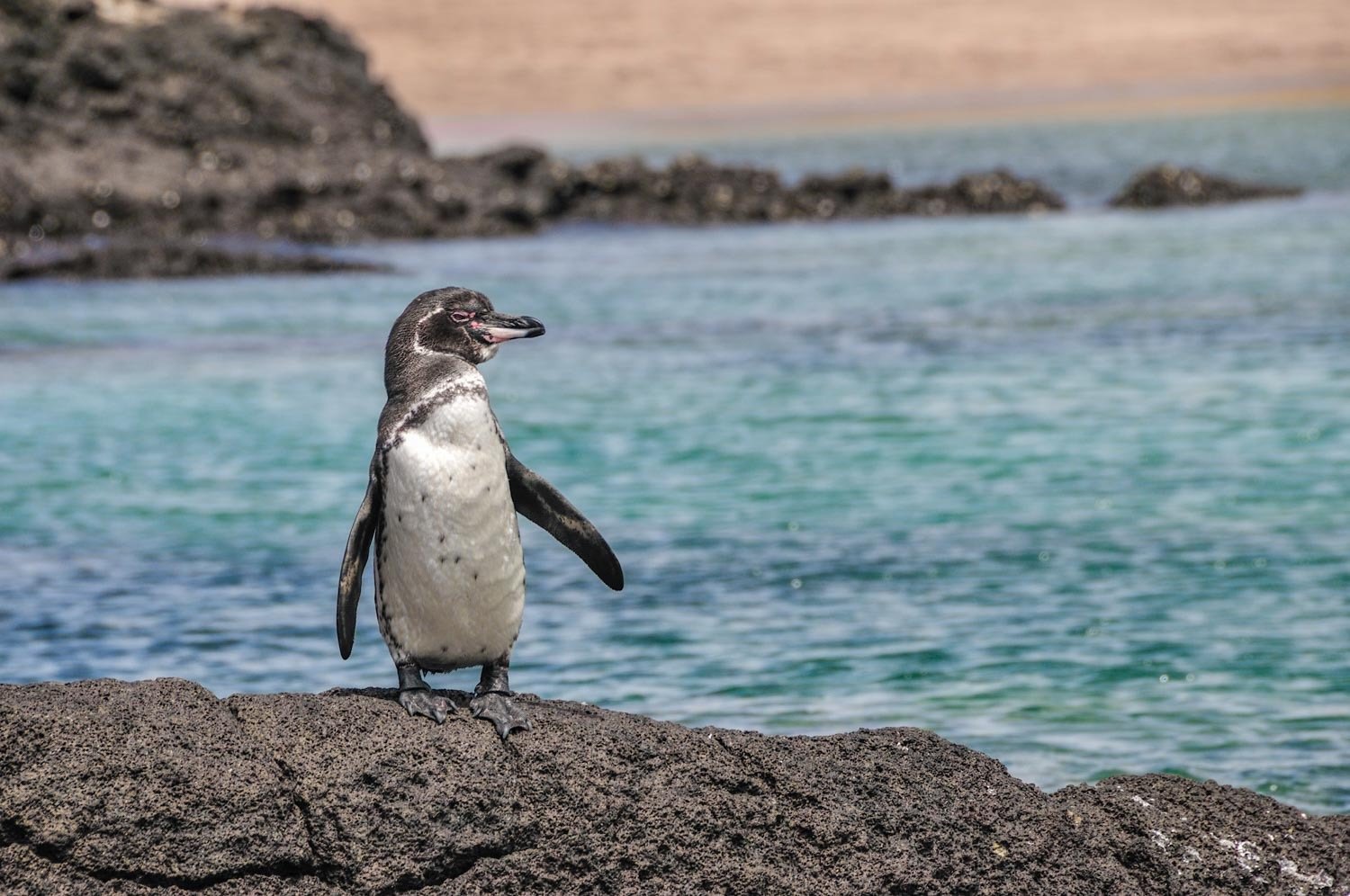
LANDED can also help you choose a cruise itinerary that increases your chance of seeing the rarest animals, such as flightless cormorants or albatrosses. Nearly all the reptiles (97%), the large majority of avian species (80%), one-third of the plants (30%) and one-fifth of marine species (20%) found in the Galapagos are endemic.
Many of the species found in the Galapagos archipelago can be observed up close. Your guide will help you maintain the appropriate distances. If an animal is curious, you are permitted to stand still while it approaches. For example, it’s not unusual for sea lions to swim playfully and closely with snorkelers.
Galapagos yachting charter itineraries can be customized to fit your interests.
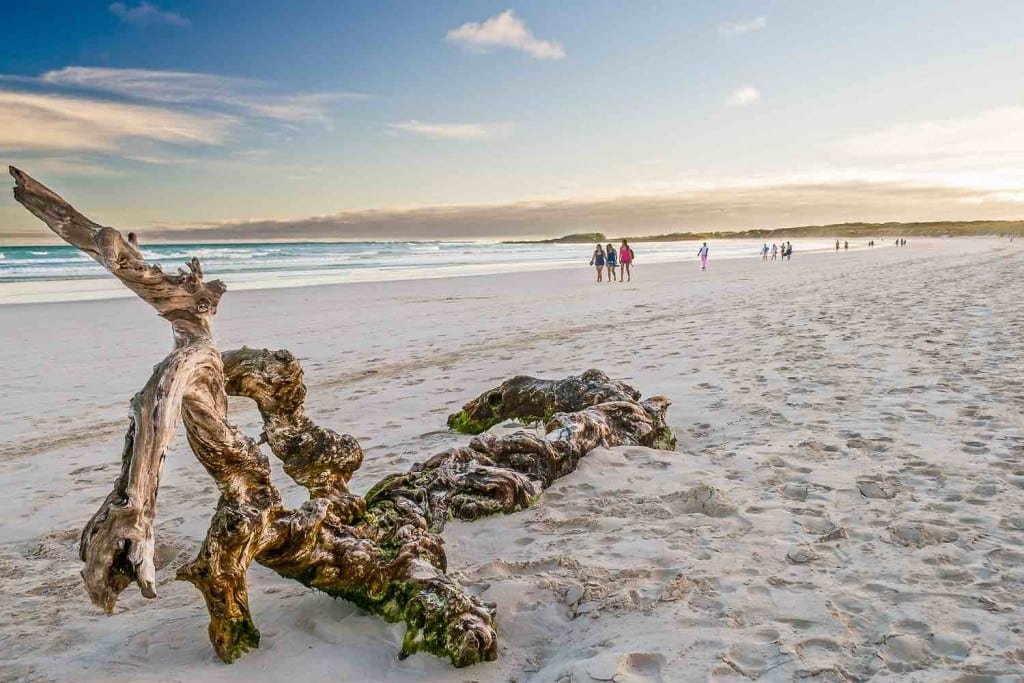
Curious about what to pack for the Galapagos? Find our Galapagos Packing List here.
LANDED Galapagos cruise charters are fully staffed with captain, crew, chef, and bilingual naturalist guides. We arrange:
- Private yacht cruises
- Private catamaran & trimaran cruises
- Private dive cruises
High season Galapagos charters (December to May) should be booked at least a year in advance—the best vessels book up quickly.
Our team includes in-country and US-based experts who can help you sift through the options. Give us a call at 801.582.2100, and we’ll help you make the most of your time and budget.


